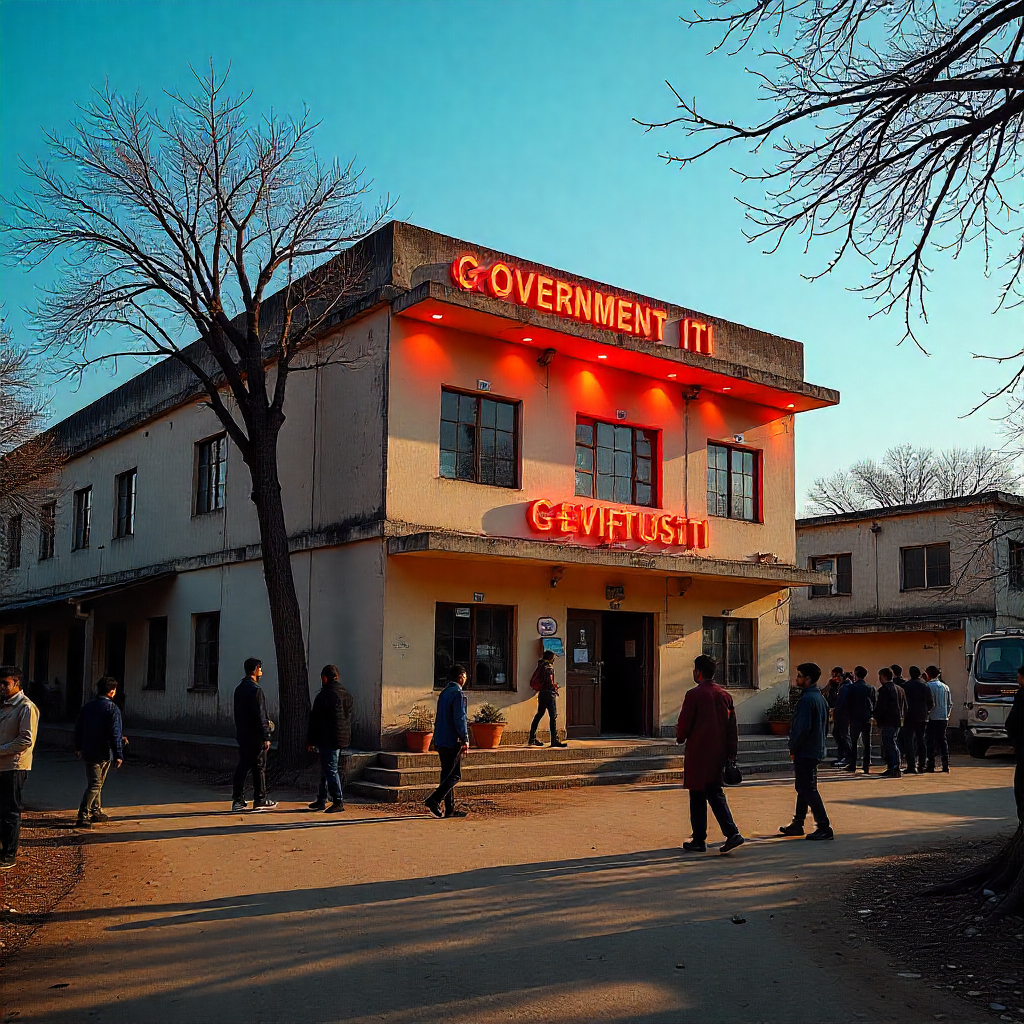Introduction: A Shocking Fall From Grace
In the heart of Odisha’s Kandhamal district lies Phulbani, a peaceful town nestled amid forested hills and tribal settlements. For decades, institutions like the Phulbani Government ITI have served as beacons of hope for rural and underprivileged students, offering a path toward technical education, self-reliance, and employment.

But in July 2025, this reputation suffered a major blow.
The Phulbani Govt ITI ex-principal, once a respected figure in the education community, was sentenced to three years of rigorous imprisonment in a Disproportionate Assets (DA) case. Investigators found that he had amassed assets worth ₹1.65 crore, well beyond his disclosed income of ₹70 lakh. This case, though centered in a remote corner of Odisha, holds up a mirror to a wider systemic rot.
This isn’t just about one corrupt official; it’s about how public trust is eroded when accountability is absent, especially in institutions that shape India’s next generation.
Background: What Is a DA Case?
Disproportionate Assets (DA) cases arise when public officials possess wealth that cannot be explained by their lawful sources of income. These are tried under the Prevention of Corruption Act, 1988, one of India’s key laws against corruption in public service.
In the Phulbani case, Odisha Vigilance discovered that:
- The ex-principal earned around ₹70 lakh during his service from 2005 to 2020.
- His real-world assets amounted to ₹1.65 crore, a gap of ₹95 lakh.
- These included real estate in Bhubaneswar and Berhampur, gold ornaments, bank deposits, and a luxury car.
After years of investigation and trial, a special vigilance court in Phulbani finally pronounced the verdict.
A Small Town’s Big Shock: Trust Broken
In many parts of rural India, especially in tribal belts like Kandhamal, a government job is sacred. It offers not just stability but prestige. So, when a government principal is found guilty of corruption, the emotional fallout runs deep.
A local teacher from Baliguda, Mr. B. Rout, said:
“When people hear a government ITI principal is corrupt, it makes them wonder who they can trust anymore.”
The betrayal wasn’t just administrative; it was personal.
Personal Lens: A Mirror from Rajasthan
During a visit to a small town in Rajasthan a few years ago, I came across a similar incident. A government hospital pharmacist had been caught with a BMW and three illegal plots. The town was buzzing, not because people were surprised at the crime, but because they didn’t see it coming.
Much like in Phulbani, the system had no checks until someone finally blew the whistle.
This raises a key question: How many such cases are still hidden across India?
DA Cases in India: A Growing Pattern
DA cases are not rare. They’re disturbingly frequent across India.
📊 Table: Major Disproportionate Asset Convictions (2015–2025)
| Year | State | Designation | Value of DA (₹ Crore) | Verdict |
|---|---|---|---|---|
| 2015 | Tamil Nadu | IAS Officer | ₹13.5 Cr | 4 years RI |
| 2018 | Karnataka | IPS Officer | ₹8 Cr | 5 years RI + fine |
| 2021 | Maharashtra | Forest Dept Official | ₹4.2 Cr | Case ongoing |
| 2024 | Odisha | RTO Clerk, Berhampur | ₹1.1 Cr | 2 years RI |
| 2025 | Odisha | Phulbani ITI Principal | ₹1.65 Cr | 3 years RI + seizure |
Sources: CBI.gov.in, odishavigilance.gov.in
Legal Aspects: How DA Cases Are Built
The process of a DA conviction isn’t simple. It involves:
- FIR Registration: Usually triggered by a tip-off or whistleblower.
- Preliminary Investigation: Comparison of income, lifestyle, and asset records.
- Raids: Conducted at homes and offices to gather evidence like gold, property documents, and cash.
- Charge Sheet Filing: Under IPC sections and the Prevention of Corruption Act.
- Court Trial: Evidence is presented, cross-examined, and judged in a special vigilance court.
Most of these cases take 5 to 10 years to reach a verdict, often weakening due to delays and missing evidence.

Regional Reactions: Trust Shattered
- In Rural Kandhamal, Shockwaves were felt across the community. Students, faculty, and parents expressed grief and anger. The ITI’s image took a beating.
- In Bhubaneswar, the urban population demanded stricter audits of education institutions. Media channels covered the story extensively.
- Nationwide: Education activists and public accountability groups called for reforms in administrative hiring, monitoring, and whistleblower protection.
Why This Matters: Crisis in Education Governance
The case reveals a much deeper problem in India’s educational administration, especially in rural areas.
🔍 Problems Exposed:
- No mandatory audits for institutions.
- Promotions and transfers are often based on political favors.
- Lack of public grievance platforms for students and staff.
✨ Opportunities for Reform:
- Annual asset declarations for all administrative officers.
- Rotation of principals every 3 years to prevent power hoarding.
- Independent ombudsman at the state level for institutional complaints.
- Public display of audit reports and vigilance status of all ITIs.
Public Cooperation Is Key
Interestingly, the Phulbani case came to light because of an internal whistleblower, an ITI staff member who saw something suspicious and reported it. This underlines the importance of vigilance from within.
But whistleblowers must be protected. In many cases, these individuals face retaliation or career sabotage.
🔗 Recommended Resources:
- Prevention of Corruption Act – PRSIndia
- Odisha Vigilance Portal
- Transparency International India
- RTI Online Portal
- CBI Anti-Corruption Division
Student Fallout: The Silent Victims
The students at Phulbani Govt ITI are left picking up the pieces.
- Classes are delayed, and administrative duties are disrupted.
- Confusion over document verification and certificate issuance.
- Recruiters may hesitate to visit the campus due to reputational damage.

A 2nd-year mechanical student said:
“We came here to build our future. But now we’re caught in the middle of someone else’s crime.”
Political & Media Reactions
The fallout isn’t limited to education alone. Political circles have picked up on the issue.
- The local MLA has called for audits of all ITIs and polytechnic colleges in Odisha.
- Media houses like Pragativadi and Times of India continue to report updates, demanding more transparency.
🔗 Read the TOI Report
🔗 Pragativadi Coverage
Preventing the Next Scandal: What Must Be Done
✅ Prevention Strategy:
- Implement AI-based audit tools to flag financial irregularities in real time.
- Make annual income disclosures compulsory and public.
- Ensure strict enforcement of the Whistleblower Protection Act.
- Conduct surprise inspections by independent bodies.
- Launch a statewide awareness campaign about corruption reporting.
Conclusion: Beyond One Man’s Crime
The conviction of the Phulbani Govt ITI ex-principal is not just an isolated case; it’s a symbol of a much larger disease within public administration. Corruption in education is not just theft of money; it’s theft of opportunity, trust, and the nation’s future.
Phulbani’s story is a warning. It tells us that vigilance is not just the duty of the state but a collective responsibility of students, staff, auditors, and citizens. The fight against corruption begins when people decide not to look away.
✅ FAQ Questions with Answers
What is the full case against the Phulbani Govt ITI ex-principal?
The ex-principal of Phulbani Government ITI was found guilty of amassing assets disproportionate to his known sources of income between 2005 and 2020. Investigations revealed properties, cash, and valuables totaling ₹1.65 crore against a legitimate income of just ₹70 lakh.
Which court passed the judgment, and what was the sentence?
A special Vigilance Court in Phulbani convicted the ex-principal and sentenced him to three years of rigorous imprisonment (RI) along with fines and property seizures under provisions of the Prevention of Corruption Act.
What does a DA (Disproportionate Assets) case mean?
DA cases involve public servants possessing wealth or property far beyond their known sources of income. It is a punishable offense under the Prevention of Corruption Act, 1988.
How was the DA detected in this case?
The Odisha Vigilance department acted on a whistleblower tip, conducted raids, and uncovered multiple properties, high-value items, and undeclared bank balances, which could not be explained by the official salary or income.
What are the effects of this case on students of Phulbani Govt ITI?
Students are facing disruptions in administrative procedures, uncertainty over placement partnerships, and demoralization due to the tarnished image of their institution.
What measures can prevent similar cases in the future?
Annual income disclosure for all senior staff
Implementation of audit trails
Regular rotation of administrative staff
Public grievance portals
Whistleblower safety programs
Can a DA case impact pensions and other post-retirement benefits?
Yes. If a government employee is convicted under a corruption act, they can lose gratuity, pensions, and other retirement benefits depending on service rules.
How long do DA cases usually take to conclude in India?
Most DA cases take 5–10 years due to investigation timelines, evidence gathering, and slow judicial procedures. However, fast-tracking is possible through special vigilance courts.